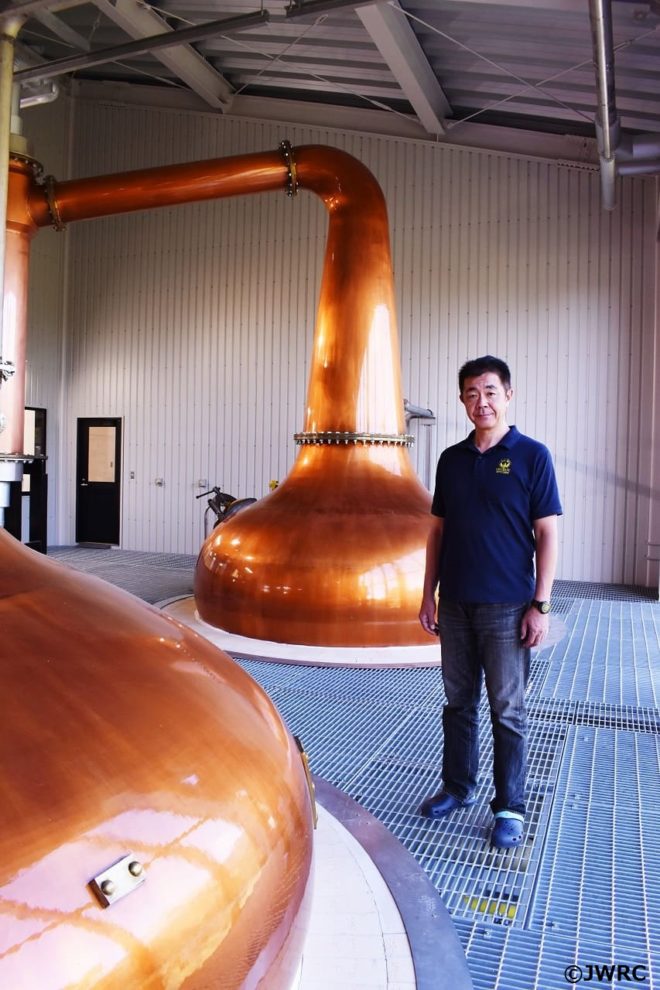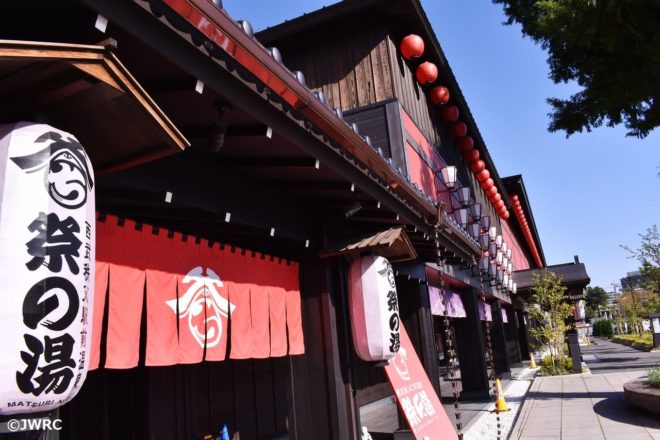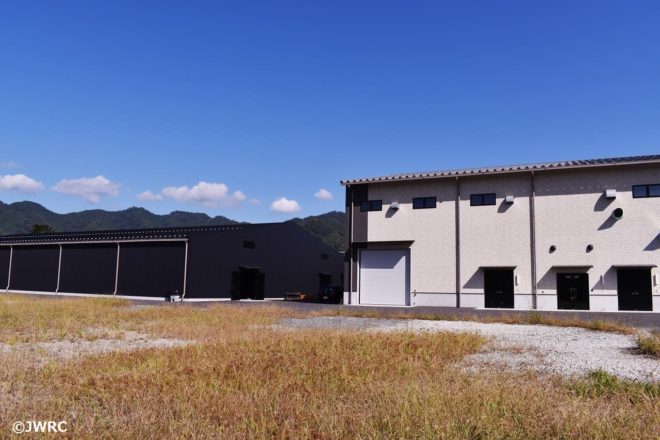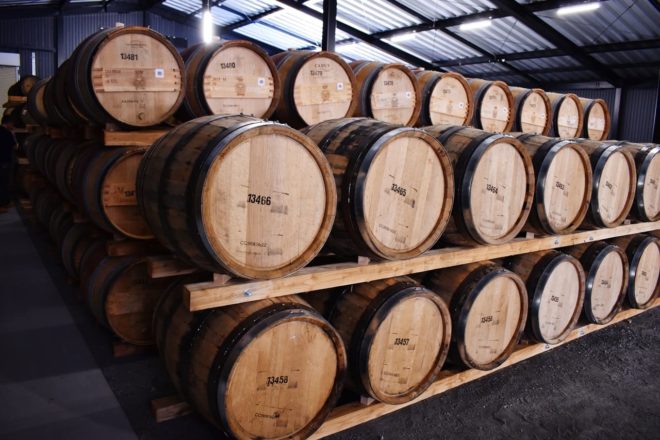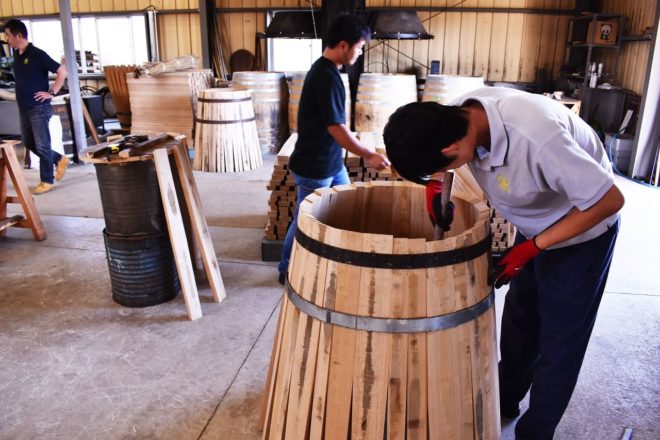Chichibu Distillery, Venture Whisky
Returning to whisky’s roots with gas direct-fired distillation
Images/text: Mamoru Tsuchiya
Translation: Whiskey Richard
This article originally appeared in Japanese in Whisky Galore Vol.17 / December 2019.
Image top: The 10,000L wash still (forefront), and the spirit still opposite. Both are straight head shaped, and use gas direct firing.
Progress at Venture Whisky’s Chichibu Distillery has continued at a steady pace since it began operating in February 2008. In the summer of 2019, construction was completed at their second distillery (simply “Daini”, or #2) in Midorigaoka Industrial Park. “When in doubt, go back to where it all began.” These are the words of Akuto-san, whose “Malt Dream Chapter 2” is Scotch’s traditional direct-fired distillation. We visited the site.Washbacks made of French Oak
Within the Midorigaoka Industrial Park in Chichibu, Saitama, Venture Whisky’s second distillery opened in the summer of 2019. Full operation began in October 2019.
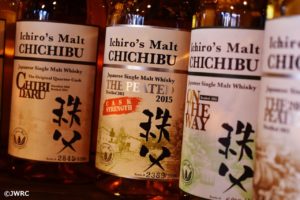
“To be honest, yes we’ve made it this far, but the hard part is just beginning,” says a beaming Ichiro Akuto. That’s because this is the start of the second chapter of his Malt Dream.
“We wanted to go back to the roots of whisky making. Since our first distillery was staffed by only two or three people, an emphasis on efficiency led us to choose steam-based indirect heating. But at the beginning, whisky making used direct fire distillation. With our second distillery, we wanted pay homage to that tradition.”
Venture Whisky’s first distillery, which began operating in February 2008, is a micro distillery with just 400kg of malt used for one batch. The mash tun is “manual” and has a capacity of 2000L of mash. The washbacks are the world’s first made from mizunara, but the still is 2000L, also making it micro-sized.
That’s compared to this second distillery, which handles 2 tons of malt in one batch: five times the volume. The mash tun is again made by Forsyths, but this time around it’s a semi-lauter tun. It’s also equipped with a sight glass on the side. This allows the grain bed to be visually inspected from the side, enabling a smoother lautering.
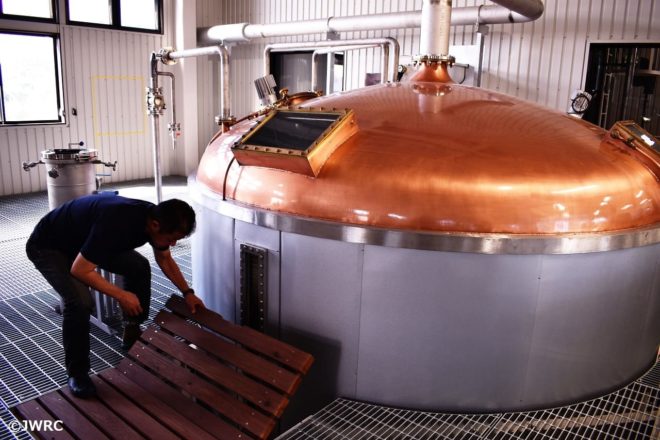
The wort yield is around 10,000L, and while the first distillery used mizunara washbacks, this second distillery uses French oak. They are made by France’s Taransaud, known for their cask-making and oke-making abilities. A craftsman came over from France and assembled the washbacks on-site. And of course Akuto-san is exacting when it comes to Chichibu’s unique lactic acid bacteria.
“We have only just begun operation, so it’s hard to be sure, but I believe we’ll develop a specific flavor profile from this particular distillery. Only the hardier lactic acid bacteria that’s resistant to tannins will remain in the French oak.”
Making casks using Chichibu-grown Mizunara
The stills are of course Forsyths; there is one wash still and one spirit still. Both are have straight heads and use gas direct firing. The wash still can handle the 10,000L of wash that comes out of the washback. The spirit still takes in those low wines, plus the feints of the previous run, a total of about 6500L.
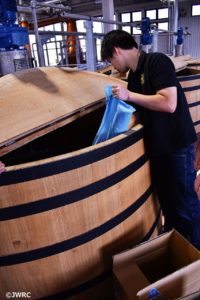
Our visit in early October 2019 was just a couple weeks after the distillery began full operation, so only around ten batches were completed so far. Once things settle down, more washbacks will be added, allowing for two batches per day. The wash is 7-9% abv. For the time being, they are using non-peated Laureate malt and are still collecting data.
So what about the positioning of the first distillery and second distillery going forward?
“We are looking to make the first distillery more craft and more experimental. The goal for this second distillery is to enable us to provide a stable supply of Chichibu’s standard to the market.”
Two-row barley grown in Saitama has already been in use for a few years. And this year, the company made ten mizunara hogshead casks from mizunara grown in Chichibu.
If there’s something nobody has done before, the Chichibu Distillery tries it immediately. Perhaps the secret of Chichibu’s progress is Akuto-san’s willingness to take on new challenges.

Mamoru Tsuchiya is Japan’s foremost whisky critic. He is the Representative Director of the Japan Whisky Research Centre, and was named one of the “World’s Best Five Whisky Writers” by Highland Distillers in 1998. He served as the whisky historian for NHK’s Massan and he has published several books such as The Complete Guide to Single Malt Whisky, Taketsuru’s Life and Whisky, and The Literacy of Whisky. He is the editor of the bimonthly Whisky Galore, Japan’s only print whisky magazine.

